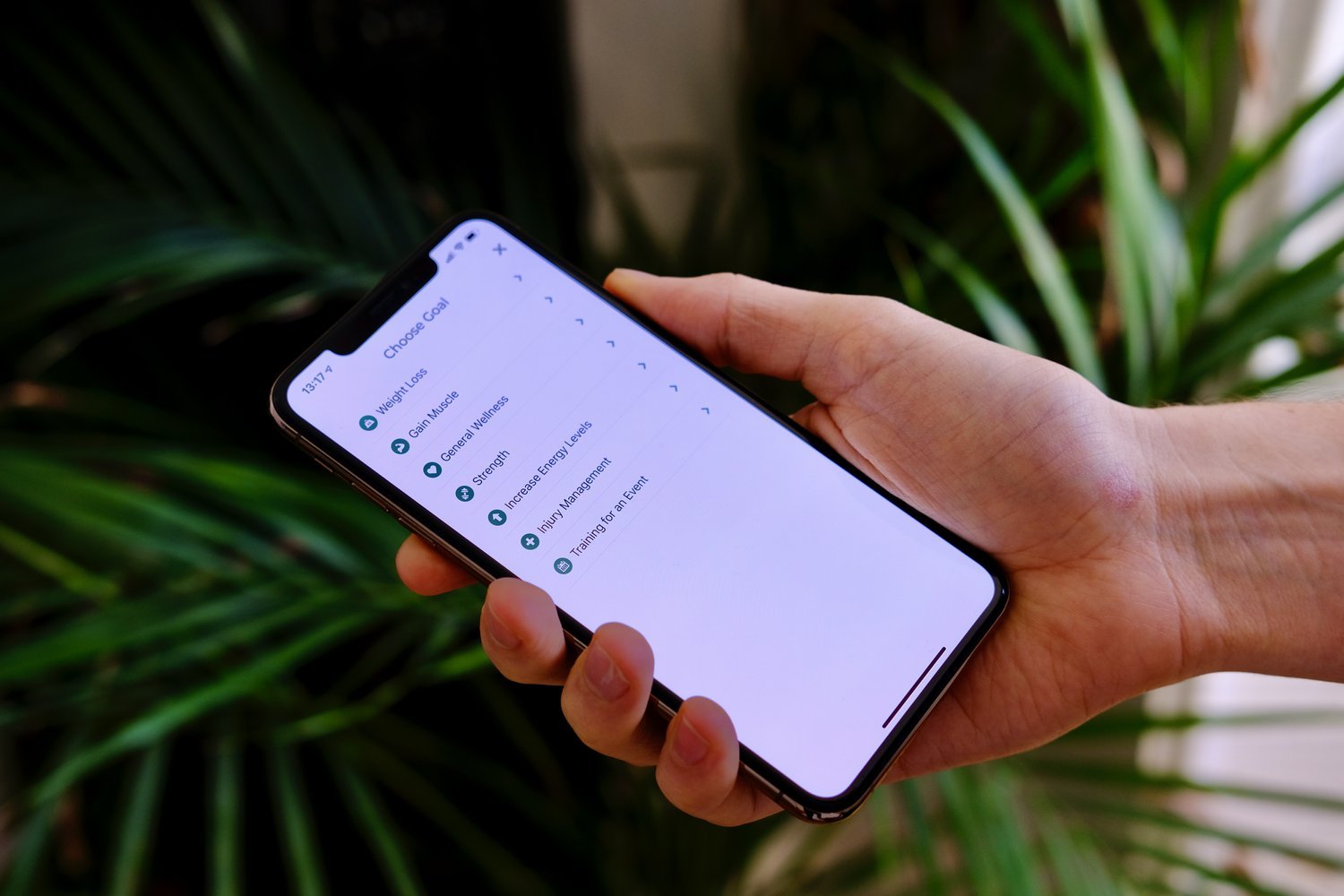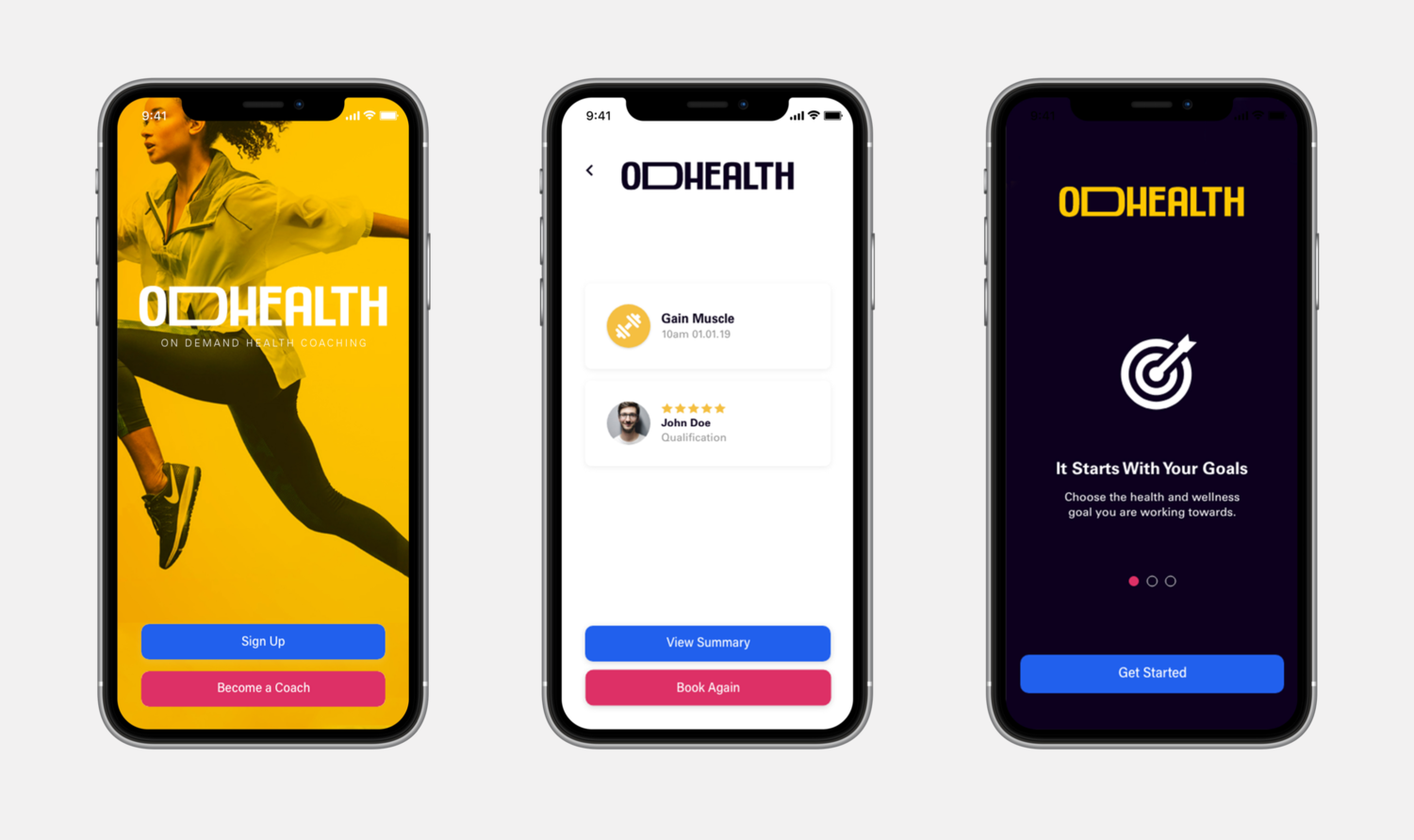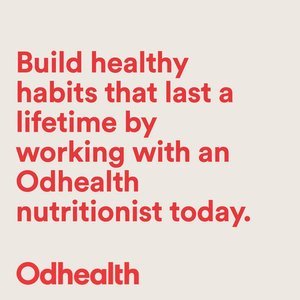Odhealth -
What We Learned
When I first had conversations about starting something of our own with my business partner Tom, I never thought I'd learn so much along the way.
I wrote this article to reflect on what we created, but also to show learnings in the hope that others can take away something useful from it.
V1 - HealthPOD
Originally we created HealthPOD - Health Professionals On Demand - which matched people to personal trainers for virtual consultations. In a way we were ahead of our time before video calling was the norm/expected, but it didn't really work out.
We 'bootstrapped' the first iteration of the HealthPOD app, raising initial seed money of just £28k, meaning a lot had to be done ourselves. We used SquareSpace to create a very very minimal viable product (VMVP?), which the data from informed scoping, UX, UI, Wireframes and more. We had these turned into an awesome platform by working with the team at Netsells to create the native apps on iOS & Android in exchange for equity.
The HealthPOD app on iOS and Android.What did we learn?
📱 Apps are tough to market. No one really wants to install them so you have to give them a very good reason. It's getting a balance of smart marketing position whilst demonstrating clear feature/product 'reasons' to download an app. If you're considering making an app-only platform, I'd recommend thinking abut web too. More on that below.
I was actually shocked at how good our app was considering our time and money constraints - we were very proud of the product. It still sits on a Github repo waiting to be repackaged! There was functionality built into the app that we were previously quoted a LOT more than we spent so it felt great to know we'd achieved that with such constraints by doing a lot of the heavy lifting ourselves.
🤝 What we did do is focus on learning as quickly as possible and recording all the data in easy to understand ways. This gave us a small customer base and data to assist in the vital creation of partnerships with gym companies.
Crowd Investment with CrowdCube
In October 2019 we went for a crowd investment raise using CrowdCube. This was an awesome journey and tested our ability to really sell our idea, and I also learnt a ton about trying to make a good pitch video; editing, filming and packaging the whole thing.
🚀 Initially with a goal of £50,000 in 30 days, we raised an amazing £169,000 in just 9 days. 🚀
A shot from our CrowdCube pitch video.The only downside being this was just the beginning of dealing with long legal documents with shareholders... something I don't think I'll ever get used to 😅
⏳ One thing I will say is that Crowd Investment (when done properly) can take up a hell of a lot of time and require a lot of effort, particularly if you don't have the money to hire a professional videography agency. One to keep in mind - I would suggest trying to do as much of the heavy lifting yourself - we were getting insane quotes to do a 3 minute pitch video.
V2 - Enter Odhealth
From the data we gathered with HealthPOD we realised 2 things:
Our brand wasn't up to scratch, and it was blending in with the market rather than standing out 🎨
Most of our customers wanted nutrition help and not physical training help 🍎
People just didn't really like the name and it wasn't catchy enough 💬
A Rebrand & Product Launch
With some more user data and market research behind us, we rebranded to Odhealth (on-demand health) in January 2020 with a focus on an anti-diet solution to health, gaining traction through partnerships with Axa, Hussle and more.
Odhealth aimed to fill registered Nutritionists' dead time and pass that value on to the customer, through an online matching system for video consultations.
Anti-diet
Odhealth focused on giving people qualified nutritionists to form habits that really change their lives, rather than fad diets.
A Web Platform & New Visual Identity!
We were still finding it difficult to convert users when they had to download an app. So we created a new version of the platform that moved away from the app to a web based solution and with it we brought a new visual identity. This meant:
We didn't have to rely on users installing something before they became a customer
We could create and iterate landing pages easily
We could improve features and change copy with ease
It also helped that I built the whole thing using WordPress which meant we could also easily create epic content for SEO as well as easily create targeted landing pages for ads.
🚀 To take the platform further, we also raised a brige round with a set of private investors. 🚀
Product/market fit
After experimenting with social advertising, YouTube video ads & a few more channels, we realised that search was the best place for us, along with our partner platforms such as employee benefit platforms.
The strategy was simple: answer people's questions about nutritionists and answer them far better than the information currently out there - then show them how to book with a nutritionist that was far better value.
We did this with several pieces of “hero” content and several strong blog posts and videos featuring registered nutritionists expertise. Our product landing pages were targeted with a Google Ads campaign for very high intent keywords, coupled with informational content clusters surrounding them.
🎉 It worked. For a small set of extremely high intent keywords we started to rank organically in solid positions, eventually getting to position 2 (right behind the NHS) for "What is a Nutritionist" and position 1 for "Online Nutritionist" and "Book a Nutritionist".
AdWords
We managed to produce a steady stream of customers through Adwords and SEO.
This on top of great Google Ads performance meant we started to generate a steady set of customers, reaching into the hundreds through this method.
But there was one problem. The market was small-ish and specialised; we essentially had a hold on it - where could we go next? 📈
A Scale-up Raise - But Not Enough
We got to a point where our search marketing was generating regular customers at a solid CPA, but that market would only get us to a certain point - we literally had search data to show how many people we could target monthly and we were in position 1/2 for those people.
🔍 We learnt that search marketing (as I already knew) was epic, but also had its limitations.
So our next raise was focused on getting enough investment to market to the masses.
💲 Unfortunately, we didn't raise what we wanted. We'd aimed a CrowdCube raise for £300k and by the end of the campaign got to around £170k. Which was amazing, but not enough to scale with new marketing channels as we'd hoped.
V3 - Strongly - The Future
We'd had quite a journey by this point, and I hope I've captured some interesting stuff. It's of course an oversimplification of lots and lots of factors that went in to building everything, including staff, payroll, accounting spreadsheets and all the other fun stuff that comes with running a startup 🤩
We decided to turn the money down and focus our efforts on a new mission, aligned with both the concepts behind HealthPOD and Odhealth, but with a new method of knowledge delivery. 🎯
We created Strongly with a mission to make strength training more accessible for all.








